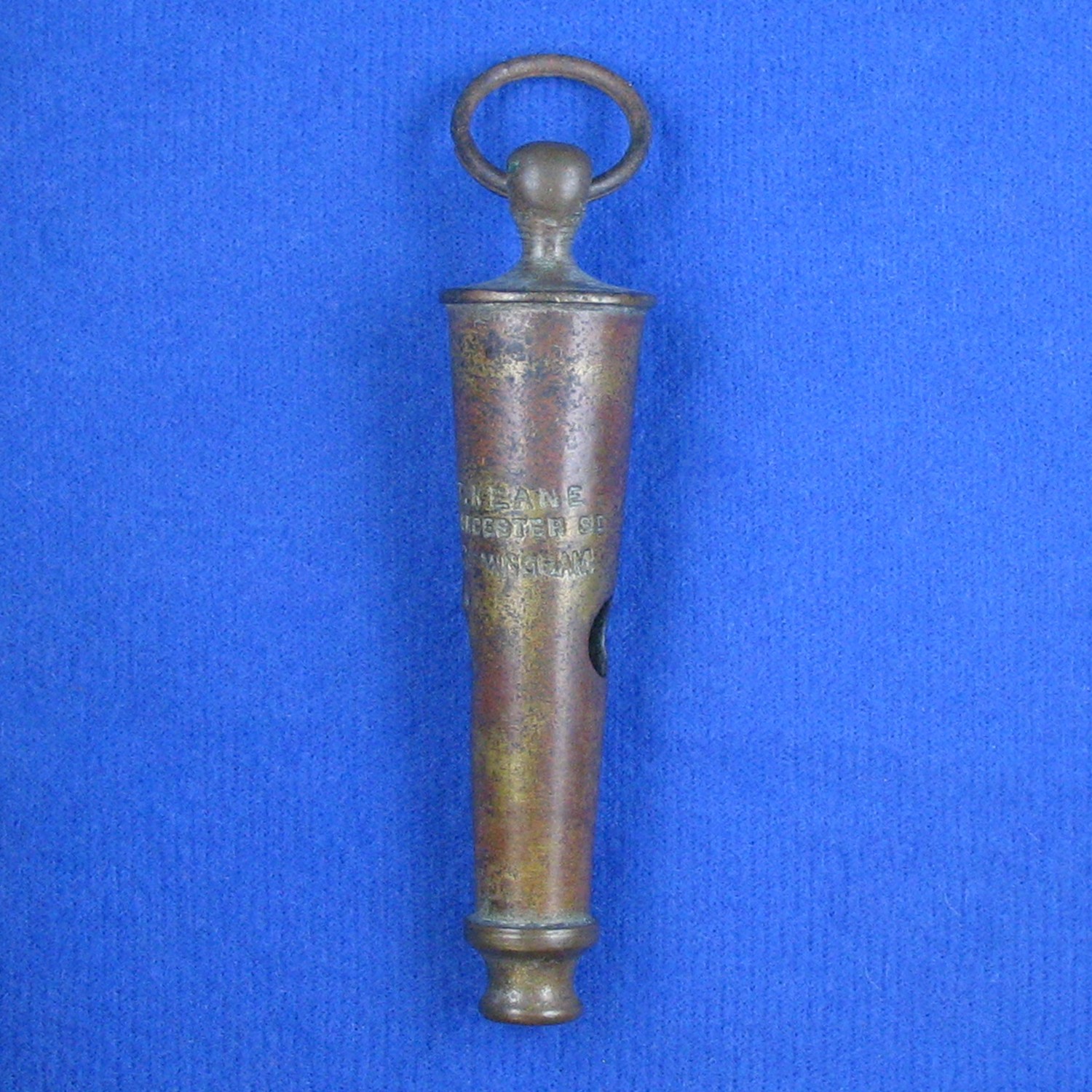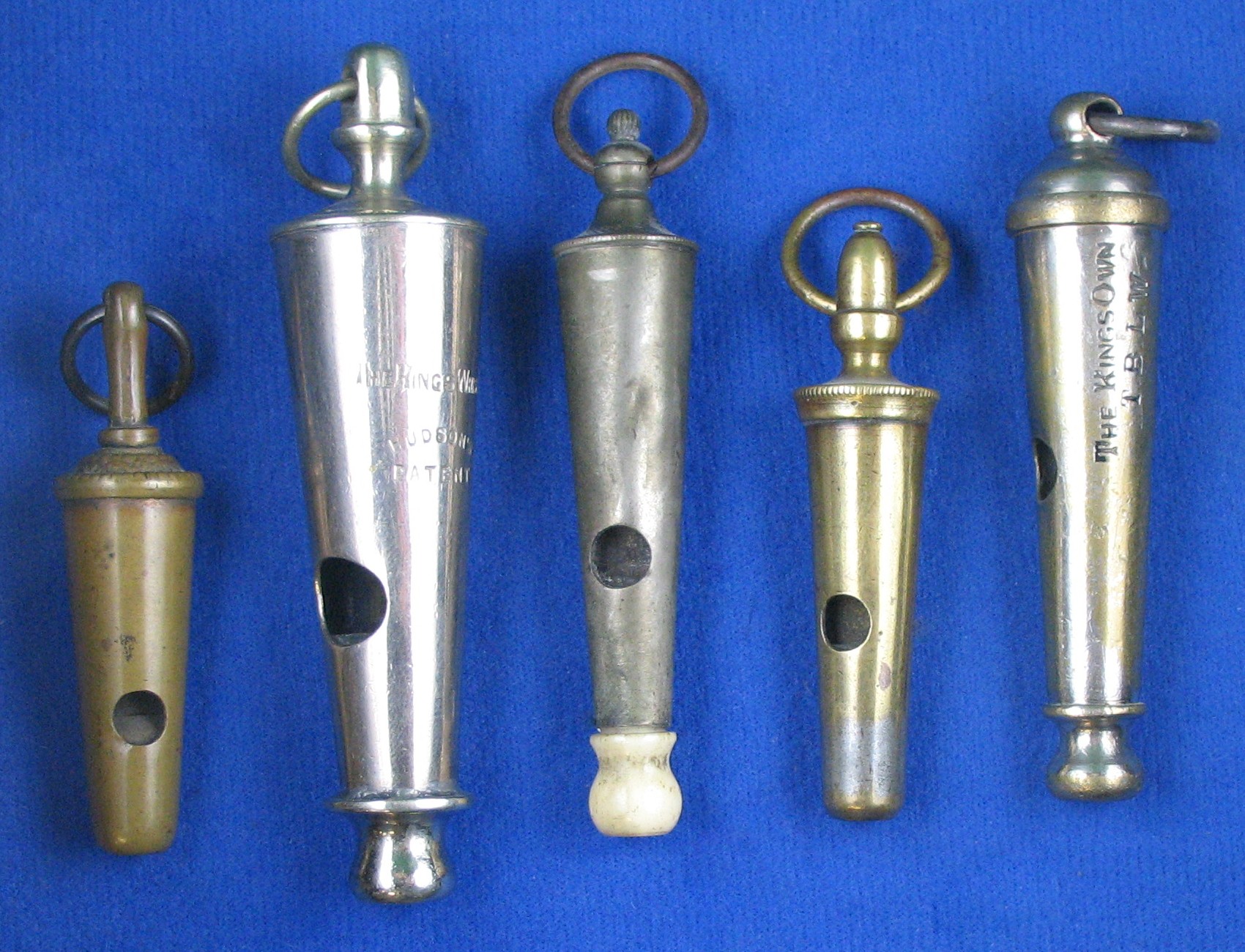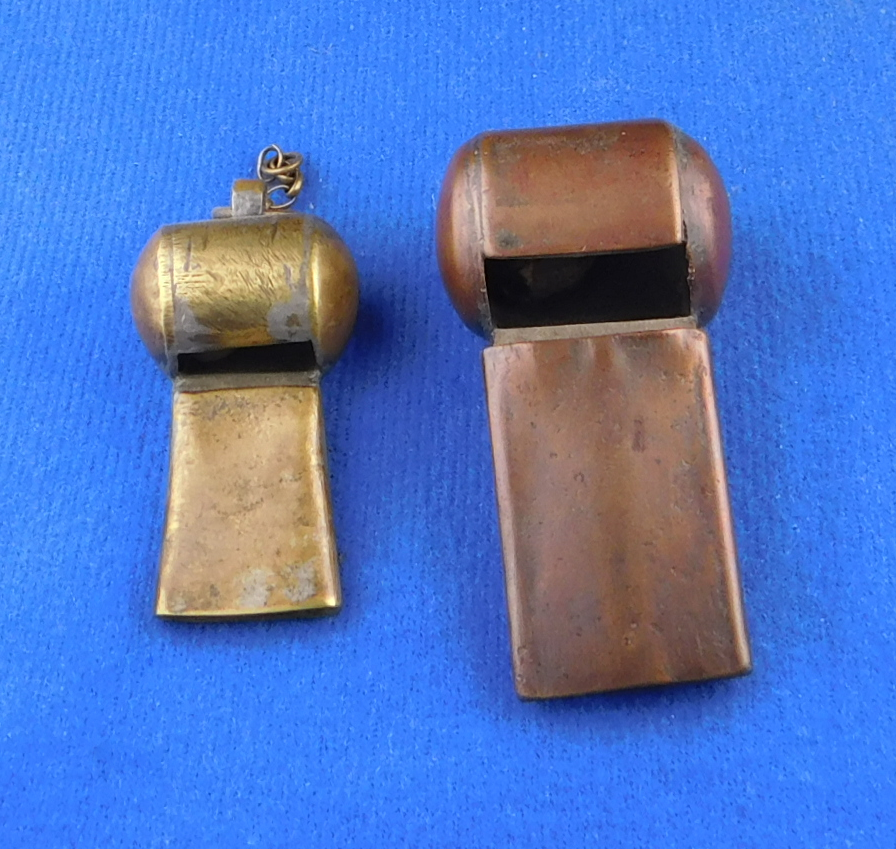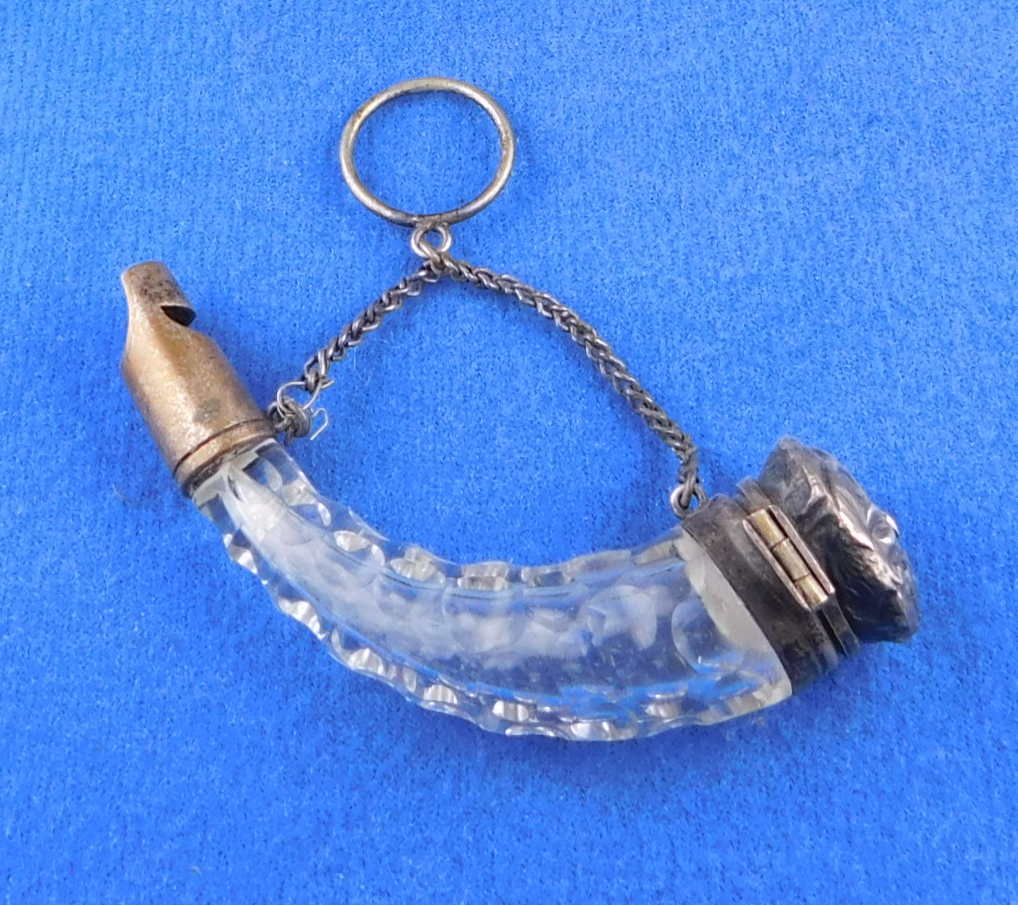Whistle Categories > Beaufort Whistles (Conical Whistles)

Where did Beaufort whistles originate?
The earliest beaufort or conical whistles appear in the UK and date back into the early part of the 1800s. They might have had ivory mouthpieces and be made of silver or nickel silver and perhaps they were made by Dixon in their early years or could have been made by musical instrument companies. These were made for many years there until usurped by other models, especially tube shapes.
It would take years to come from any other countries like the USA, but other countries did not take up models of this cone shaped whistle.
How are Beaufort whistles identified?
Beauforts or conical shape whistles are clearly identified by the tapering structure of the main body of the whistle. The variations one would encounter would be with closed or flared mouthpieces and size and materials, but perhaps the top knops of different shapes.
On the other hand, identifying the makers is more difficult because of the standardized interiors. The overall whistles found to display traits leading to good conclusions many times. Others may never be identified.
Accordingly, the stamps and designs on the main body would have nothing to do with it being classified as a beaufort or conical.
Why were they made?
Made as ladies warning whistles, made for the public, the cone shape whistle was a versatile and strong whistle and lent itself to many uses, eventually giving way to more specific designs. Some were made for police forces, some were made for advertising and some for both, such as a distributer with their name stamped on as well as a police force also.
Some beauforts or conicals were aimed at the hunting groups. A surprising amount of these whistles were made with cast mouthpieces, even ones that unscrewed to be able to clean the inside.
How did the name “Beaufort” come about?
While conical describes the shape, the name “Beaufort” caused much conjecture as to its origin. An excerpt taken from a letter written to The Whistle Gallery from Martyn Gilchrist, dated May 28, 2013:
I also named the Beaufort whistle — many people wrestled with, and used a variety of words, trying to describe the whistles of this ship on the ‘phone and on paper. I recall several phone conversations descending into confusion.
During my researches through Hudson’s archives I came upon a reference for an order for whistles from the Duke of Beaufort. He asked for a ‘further supply of whistle[s] made to the same pattern as supplied before — the tapered tube design’. Again, it seemed appropriate to name this model the ‘Beaufort’.

© – All photos with blue background property of The Whistle Gallery reference collection. Please contact The Whistle Gallery for permission of use of any website content. Use of photos without authorization is prohibited.









